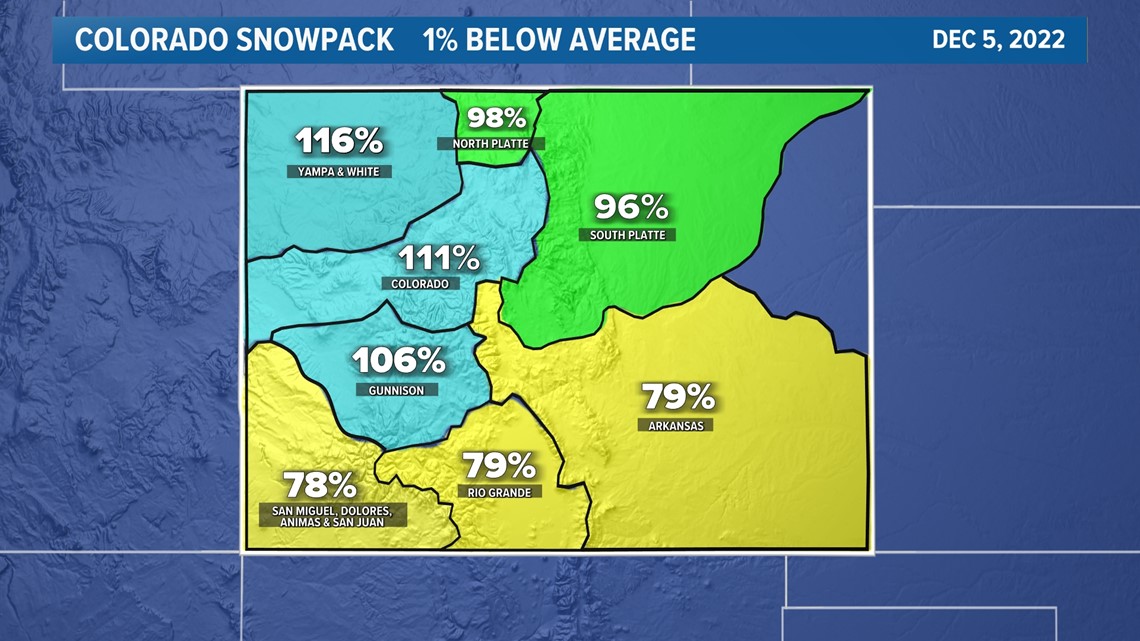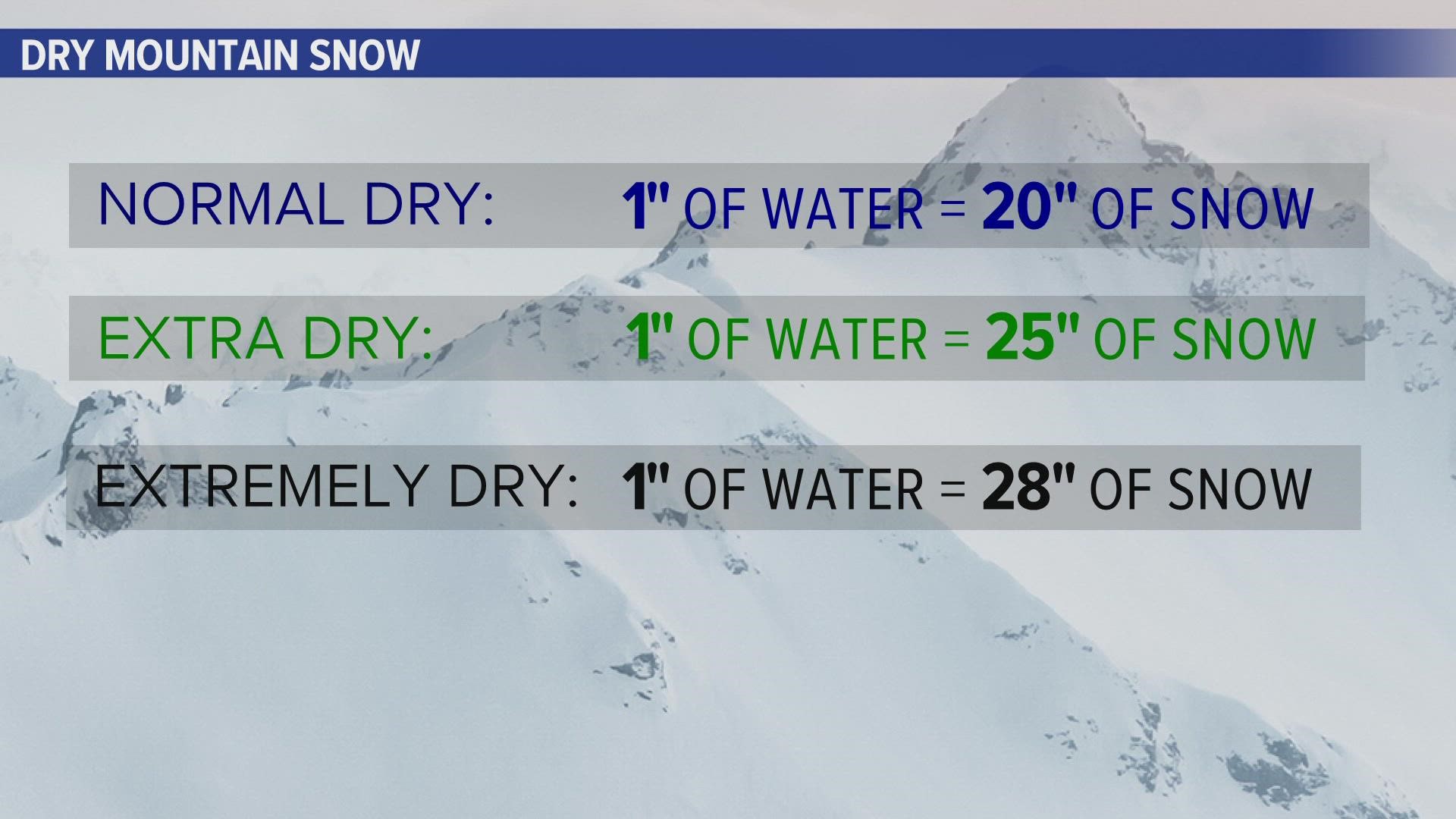COLORADO, USA — Many of Colorado's mountain ranges have received measurable snowfall in six out of the last seven days, and it's expected to snow again Tuesday through Thursday.
The storm pattern has really been active since the first day of October, so it may come as a surprise to some that Colorado snowpack is 1% below average as of Monday.
That’s mostly because the snow has been focused to the northern part of the state. Well-below-average snow down south has leveled out the statewide average.


But as active as it's been in the central mountains, it could still be a little surprising to see the Colorado River headwaters at just 11% above average.
Ski areas in Summit and Eagle Counties are reporting well above average snow. Copper Mountain has had 73 inches. Winter Park in Grand County has reported 73 inches, and there’s been 82 inches up at Steamboat.
There is another interesting factor that could be having an impact. The snow might be a little drier than normal.
Snowpack is not a measure of snow – it’s a measure of water. It’s essentially how much water there would be if all the snow melted.
As the snow settles, or packs down, the density of the snow changes but at least with fresh fallen snow there can be different amounts of snow accumulation with the same amount of water.
Here’s an example. On average, a mountain peak gets about 20 inches of snow for every inch of water. But if the snow is drier, there could be 25 inches of snow or 28 inches of snow, but it still equals just that 1 inch of water.
However, there have not been too many reports of unusually dry snow in many of the mountain towns this season. But snow reports on the Front Range have had some impressively high ratios, between 18:1 and even 27:1. The average ratio for the Denver area is 14:1.
Rapid City, South Dakota reported a 37:1 snow-to-liquid ratio with a storm in mid-November.
SUGGESTED VIDEOS: Colorado Climate

